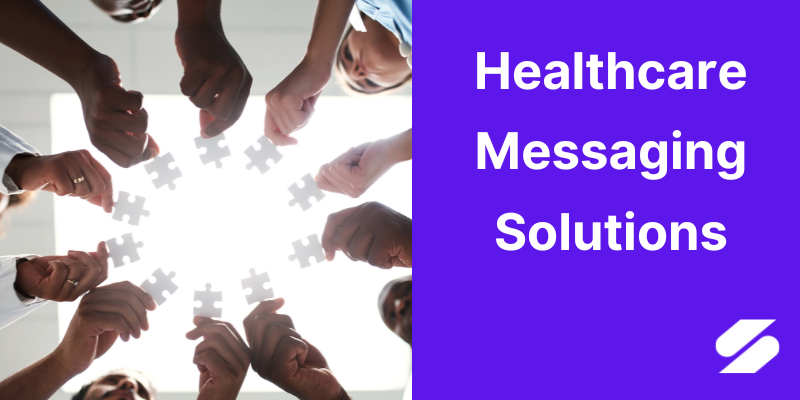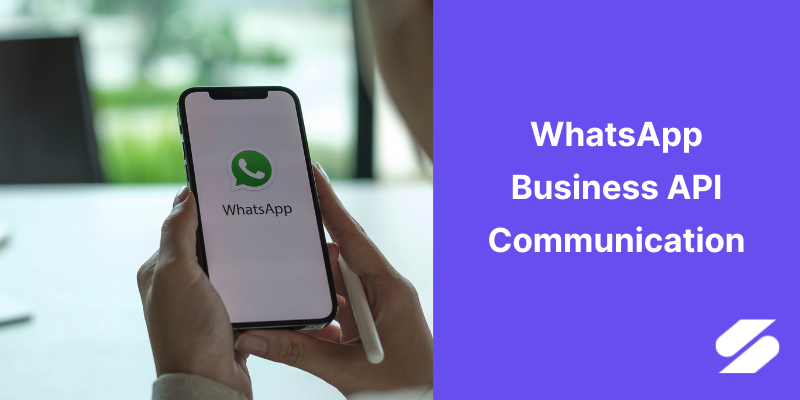How Can Omnichannel Engagement Improve the Patient Experience?
When patients contact your hospital or medical facility, what is their primary means of doing so? Do they send you an email? Pick up the phone and call? Perhaps they use the variety of social media platforms out there, or they open an app. Unless your staff has its finger on the collective pulse of all your communication methods, it becomes too easy to lose track of who reached out when and how. If a patient is requesting an appointment and you let their request sit unaddressed for too long, they won’t hesitate to take their services elsewhere. This is where omnichannel engagement through healthcare CRM becomes one of your hospital’s greatest assets. In this post, we’ll discuss patient omnichannel engagement and explain why it’s crucial for your medical facility. We’ll also delve into the benefits of omnichannel communications when using healthcare CRM such as SanoFlow.
What Is Patient Omnichannel Engagement?
Let’s begin with a definition of patient omnichannel engagement, which is also referred to as omnichannel customer support. Omnichannel engagement prioritizes and streamlines the patient experience by unifying the communication methods patients use and centralizing them to one location, such as your CRM inbox. Omnichannel communication encompasses traditional, eCommerce, and multichannel options for seamless engagement in whichever way your patients are most communicative. When a patient has a query, rather than requiring you to log into different platforms, services, or apps to respond to them, you’ll see that question appear on your healthcare CRM’s dashboard so you can address the patient immediately. The result is a personalized patient experience that meets the needs of your patients as those needs arise.
Why Do You Need It?
If your hospital or medical facility already uses a bevy of programs and software to stay up-to-date with growing patient demand, you might wonder why using healthcare CRM and omnichannel communications is worth doing. You’re just adding another service to your already long list. Utilizing patient omnichannel engagement measures, especially in the greater context of healthcare CRM, can minimize other software you need and pay back dividends in the following ways.
Time Savings
Medical facilities and hospitals that still log patient appointment requests or queries using pen and paper are very much out of the loop. Patient demand will eclipse your ability to stick with that method. Even balancing several software options for keeping up with patients is inefficient. When you bounce around from one program to another to another, logging in and out to track patient requests, you waste too much time. Your healthcare CRM is a centralized dashboard on which all patient communications appear. This is far more convenient and can win back so much lost time.
Fewer Missed or Forgotten Queries
Another downside of managing patient queries solely on the platforms they emanate from is that some of these queries are bound to get missed. The more platforms you juggle, such as Facebook, Instagram, email, and WhatsApp, the harder it becomes to possibly see everything. In a rush, you could miss a patient request to schedule an appointment or a follow-up. As mentioned before, when a patient feels like you’re not expediently responding to them, you could lose their business.
Improved Rate of Resolutions
In medical care, answers aren’t always so easy to provide. You could ping-pong emails or messages back and forth with a patient without coming to a resolution. Then you get busy and forget to check back. The patient feels left in a lurch and begins consulting with staff at another medical facility. Through patient omnichannel engagement, you can more easily connect with patients and answer their queries as close to real-time as you can. With far easier query management, you won’t feel overwhelmed, which gives you and your medical team the time to thoroughly resolve a patient’s issue. Your hospital’s rate of resolution will begin to rise, which in turn improves patient satisfaction.
Lower Patient Turnover
We live in an age where if responses aren’t near-instant, then they simply aren’t fast enough. This goes back to the point we made before about growing patient demand. Such a strong demand for instant gratification isn’t limited to the healthcare industry. Indeed, across all sectors and industries, customers want companies to be on the hook anytime. By meeting more of these patient needs, you can lower the rate of turnover so your medical facility grows its numbers robustly.
Better Patient Experience
All the above points add up to a better patient experience. When a patient is still vetting which hospital they’ll choose, they’ll appreciate your fast rate of communication. If they have more complex questions, they’ll take note that their query was resolved in a timely way. As you continue to meet their demands when scheduling appointments as well as their follow-up care, the patient will feel inclined to trust in your medical facility or hospital for their healthcare. What’s better is the patient might decide to share their experiences with others, which could lead to more qualified leads for you.
The Benefits of Using SanoFlow
You’re starting to see how omnichannel engagement as part of a healthcare CRM could benefit your hospital or medical facility. SanoFlow is a healthcare CRM platform you should strongly consider. Our high-quality omnichannel communication solutions can simplify day-to-day operations in the following ways.
Integrates with Your Favorite Apps and Social Media Platforms
Social media is the present and very likely the future as well. According to marketing resource Backlinko, 4.48 billion people around the globe use some form of social media in 2021. More than likely, that includes the majority of your hospital’s patient base as well. With SanoFlow’s omnichannel communications, you can sync every popular social media platform to your CRM. These include Facebook, Instagram, and more. That’s not all. If your medical facility or hospital uses WhatsApp to communicate, SanoFlow integrates with that as well. You can even sync your Google My Business contacts, your email contacts list, and your SMS list to SanoFlow.
Every Tool and Program You Use, All in One Convenient Inbox
Once you integrate the above apps, social media platforms, and tools into SanoFlow, then all patient communications that arrive on those platforms go to your CRM inbox. In the inbox, you can instantly respond to patient questions or comments. If a query needs a more thoughtful reply, you can connect with other staff members at your hospital or medical facility using SanoFlow’s omnichannel platform. You don’t even have to switch your screen while you do this.
Assignment Rules Keep Communications Organized
That’s not the only team-based omnichannel feature SanoFlow offers in its comprehensive healthcare CRM. You can also create assignment rules within it. These customizable rules allow you to set the permissions of which team members can access which patient communication channels. SanoFlow ensures that all omnichannel communications pass GDPR and HIPAA guidelines.
Patient Insights to Personalize Future Communications
SanoFlow’s patient omnichannel platform also provides detailed patient insights to better understand your customers. For example, within the healthcare CRM, you can review such pertinent data as to which communication channels your patients most prefer. If you know that your younger patients are mostly using social media to communicate with your staff, you can respond to them through social media. You can even use SanoFlow to initiate communications through the centralized inbox. Cooperating with your patient’s communication method of choice might seem like a small thing, but it does a lot to drive confidence and trust in your medical facility. Further, SanoFlow’s insights provide a full record of patient communications, be that with yourself or other doctors, nurses, and medical staff at your hospital. If you can glean from the records that a patient has already tried treatment for a condition using a certain method, you know not to recommend them that same treatment.
Conclusion
Patient omnichannel engagement allows hospitals and medical facilities to streamline their communications with patients using one dashboard or inbox. When a customer query comes in, your staff can respond immediately, answering more questions and improving patient satisfaction. With omnichannel communication features such as third-party integration, staff collaboration, communication reminders, and multi-channel support, SanoFlow’s healthcare CRM platform can drive your hospital forward. Request your free demo today!
LinkedIn Status Update
Prioritizing patient omnichannel engagement can reduce turnover, save your medical staff time, and meet the growing needs of your patients. SanoFlow’s comprehensive omnichannel platform as part of their healthcare CRM could be just what your hospital is looking for.






